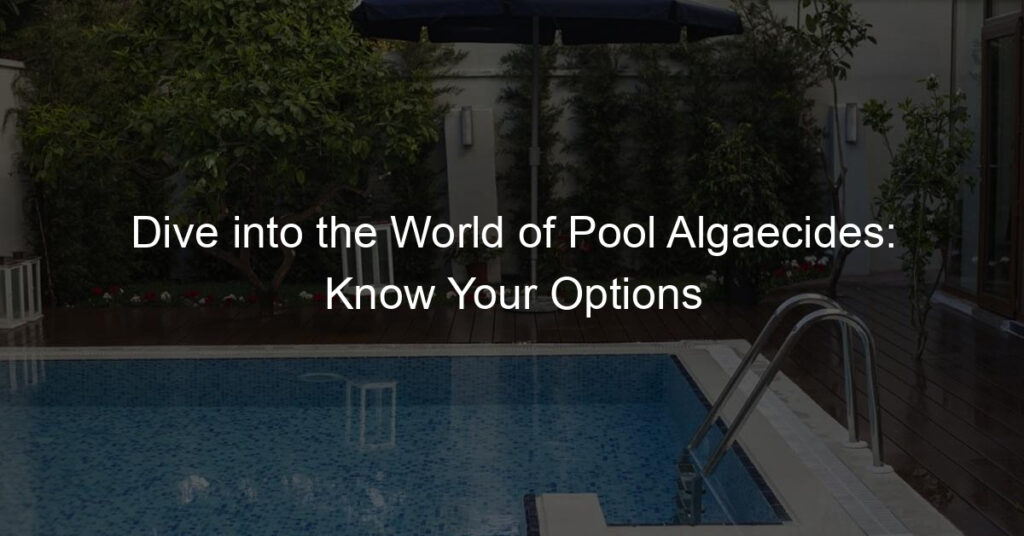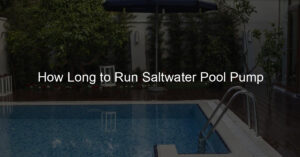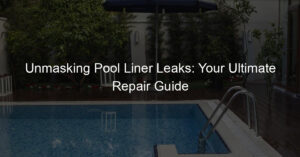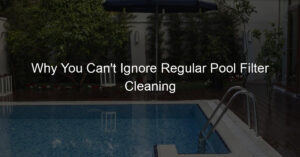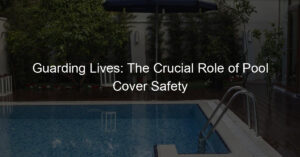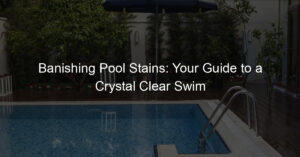Introduction to Pool Algaecides
When it comes to maintaining a swimming pool, one of the key elements that can’t be overlooked is the use of pool algaecides. But what are they, why are they important, and how do they work? Let’s delve into these questions.
- What are Pool Algaecides?
- Why are they important in Pool Maintenance?
- How do they work in Pool Algae Treatment?
Pool algaecides are chemicals specifically designed to kill and prevent the growth of algae in swimming pools. Algae, a plant-like organism that thrives in water, can turn your pool green and murky if left unchecked. Pool algaecides come in various types, each targeting different types of algae.
Algae can not only make your pool look unsightly, but it can also clog your pool’s filter system and make the water unsafe for swimming. By using pool algaecides, you can keep your pool water clear and safe. Regular use of algaecides as part of your pool maintenance routine can save you time and money in the long run.
Pool algaecides work by disrupting the algae’s growth cycle. They break down the cell walls of the algae, causing them to lose their ability to perform photosynthesis, which is how they grow and reproduce. This process effectively kills the algae and prevents new growth. It’s important to note that algaecides work best when used in conjunction with a good pool cleaning routine.
In conclusion, pool algaecides play a crucial role in maintaining the cleanliness and safety of your swimming pool. They are an essential tool in your pool maintenance kit, helping to keep your pool free from the unsightly and potentially harmful effects of algae growth.
Types of Pool Algaecides
There are several types of pool algaecides available in the market. One of the most commonly used types is Quaternary Ammonium Compounds. Let’s delve into its details.
Quaternary Ammonium Compounds
Quaternary Ammonium Compounds, also known as Quats, are a type of algaecide that is widely used in pool maintenance. They are known for their effectiveness in combating various types of algae.
- Overview and how they work
- Pros and Cons
Quats are surface-active agents. This means they work by attacking the cell wall of the algae, causing it to break down and die. They are generally mixed with water and then added to the pool where they distribute evenly, attacking algae wherever they are present.
Like any other product, Quats have their advantages and disadvantages.
| Pros | Cons |
|---|---|
| Effective against a wide range of algae types | Can cause foaming if overused |
| Easy to use and distribute in the pool | May require frequent application |
| Generally safe for swimmers | May not be as effective against black algae |
Despite the cons, Quaternary Ammonium Compounds remain a popular choice for pool owners due to their effectiveness and ease of use. Remember, the key to using any algaecide is to follow the manufacturer’s instructions carefully.
Polymeric Quats
Let’s talk about another type of pool algaecide called Polymeric Quats. They are a bit different from the Quaternary Ammonium Compounds we discussed earlier. Let’s dive in to understand how they work and their pros and cons.
- Overview and how they work
- Pros and Cons
Polymeric Quats, also known as Polyquats, are a type of pool algaecide. They are made up of long chains of molecules, which is where they get their name ‘Polymeric’. These chains are designed to stick to algae, making it easier to remove them from your pool. The Polyquats work by breaking down the cell walls of the algae, which kills them. They are a popular choice because they are less likely to cause foaming in the pool water compared to Quaternary Ammonium Compounds.
Like everything else, Polymeric Quats have their advantages and disadvantages. Let’s look at them.
| Pros | Cons |
|---|---|
| Effective against a wide range of algae types. | More expensive than other types of algaecides. |
| Less likely to cause foaming in the pool. | May not be as effective in very large pools. |
| Safe to use and does not irritate skin or eyes. | May require more frequent application. |
So, that’s a quick overview of Polymeric Quats. They are a good option if you are looking for an algaecide that is effective and less likely to cause foaming. However, they may not be the best choice for very large pools or if you are on a tight budget. Remember, the key to keeping your pool clean and algae-free is regular maintenance and using the right products.
Metallic Algaecides
Metallic algaecides are a popular choice for many pool owners. They are made from metals like copper and silver, which are known for their algae-killing properties. Let’s delve into how they work and weigh their pros and cons.
- Overview and How They Work
- Pros and Cons
Metallic algaecides, as the name suggests, contain metal ions, primarily copper. These ions are lethal to algae. When you add a metallic algaecide to your pool, the copper ions bind with the algae cells, disrupting their metabolic processes and eventually causing them to die. This method is effective against all types of algae, making it a versatile solution for pool owners.
Like all products, metallic algaecides have their advantages and disadvantages. Let’s take a look at them.
| Pros | Cons |
|---|---|
| Effective against all types of algae | Can cause staining on pool surfaces if used excessively |
| Long-lasting effects | May not be suitable for pools with high pH levels |
| Easy to use | Higher cost compared to other types of algaecides |
In conclusion, metallic algaecides can be a powerful tool in your pool maintenance arsenal. However, they should be used with caution to avoid potential side effects. Always follow the manufacturer’s instructions for the best results.
Algaecide Effectiveness
When it comes to keeping your pool clean and algae-free, algaecides play a crucial role. However, their effectiveness can vary based on several factors. Let’s delve into these factors and look at some case studies that highlight the effectiveness of algaecides.
- Factors affecting the effectiveness of algaecides
- Type of Algae: Different types of algae require different types of algaecides. For example, green algae can be treated with most algaecides, but black algae may require a more powerful product.
- Pool Chemistry: The pH level, chlorine level, and overall chemical balance of your pool can affect how well an algaecide works. If the pool chemistry is off, the algaecide may not be as effective.
- Water Temperature: Algaecides work best in warmer water. If the water is too cold, the algaecide may not work as well.
- Application Method: How the algaecide is applied can also affect its effectiveness. It should be evenly distributed throughout the pool for the best results.
- Case studies on algaecide effectiveness
- Study 1: A 2010 study found that algaecides were effective in eliminating green algae in 95% of cases when used correctly and consistently.
- Study 2: A 2015 study showed that algaecides could reduce the growth of black algae by up to 80% when used in conjunction with proper pool maintenance.
Several factors can influence how well an algaecide works. These include:
Several studies have been conducted to evaluate the effectiveness of algaecides. Here are a couple of examples:
In conclusion, algaecides can be highly effective in controlling and eliminating pool algae. However, their effectiveness can be influenced by several factors, including the type of algae, pool chemistry, water temperature, and application method. By understanding these factors and using algaecides correctly, you can maintain a clean and algae-free pool.
How to Use Pool Algaecides
Using pool algaecides effectively involves several steps. These include choosing the right algaecide, preparing your pool for treatment, applying the algaecide, and post-treatment care and maintenance. Let’s dive into each of these steps in detail.
- Choosing the Right Algaecide
- Preparing Your Pool for Treatment
- Applying the Algaecide
- Post-Treatment Care and Maintenance
Choosing the right algaecide is the first step towards maintaining a clean and algae-free pool. There are different types of algaecides available in the market, each designed to combat a specific type of algae. For instance, quaternary ammonium compounds or ‘quats’ are effective against green algae, while polyquats are used to fight black and yellow algae. Always consider the type of algae in your pool before purchasing an algaecide.
Before applying the algaecide, ensure your pool is ready for treatment. This involves balancing the water chemistry, including pH, alkalinity, and calcium hardness levels. Also, clean your pool thoroughly by brushing the walls and floor, and vacuuming any debris. This will ensure the algaecide works effectively.
Once your pool is ready, it’s time to apply the algaecide. Always follow the manufacturer’s instructions on the product label for dosage and application methods. Typically, you would distribute the algaecide evenly across the pool, starting from the deep end and working your way towards the shallow end. Allow the pool pump to run for at least 24 hours after application to circulate the algaecide throughout the pool.
After applying the algaecide, regular maintenance is crucial to prevent future algae growth. This includes monitoring and adjusting the water chemistry regularly, cleaning the pool, and using a pool cover when the pool is not in use. Additionally, consider using a weekly dose of algaecide as a preventive measure.
Remember, algaecides are a tool to help maintain a clean and healthy pool. However, they are not a substitute for regular pool maintenance. Always ensure to keep your pool clean and monitor the water chemistry regularly to prevent algae growth.
Best Pool Algaecides
When it comes to maintaining a clean and healthy swimming pool, using the right algaecide is essential. Let’s delve into the best pool algaecides available in the market.
-
Review of Top-Rated Algaecides for Swimming Pools
There are several top-rated algaecides that have proven to be effective in maintaining the cleanliness of swimming pools. Here are a few:
Product Name Key Features Effectiveness Algaecide X Non-foaming, long-lasting, safe for all pool types Highly effective against all types of algae Algaecide Y Fast-acting, non-staining, suitable for all pool surfaces Effective against green and yellow algae Algaecide Z Concentrated formula, safe for swimmers, easy to use Effective against black and blue-green algae -
Comparative Analysis of Different Products
While all the above-mentioned algaecides are top-rated, they each have their own strengths and weaknesses. Here’s a comparative analysis:
Product Name Strengths Weaknesses Algaecide X Long-lasting effect, suitable for all pool types May require more product for larger pools Algaecide Y Fast-acting, non-staining May not be as effective on blue-green algae Algaecide Z Highly concentrated, safe for swimmers May need frequent application for best results
Choosing the best pool algaecide depends on your specific needs and the type of algae you are dealing with. Always remember to follow the manufacturer’s instructions for the best results.
Preventing Pool Algae
Keeping your swimming pool clean and free from algae is a crucial part of pool maintenance. Algae can not only make your pool look unappealing, but it can also clog your pool’s filtration system and create an unhealthy swimming environment. Here are some tips and best practices to prevent algae growth in your pool.
- Regular Pool Maintenance Tips
- Regular Cleaning: Clean your pool at least once a week. This includes brushing the walls and floor of the pool to remove any algae spores that may be present.
- Proper Filtration: Ensure your pool’s filtration system is working properly. It should run for at least 8-10 hours a day to keep the water clean and clear.
- Check and Balance Water Chemistry: Regularly test your pool water to ensure it is properly balanced. The pH level should be between 7.2 and 7.6, and the chlorine level should be between 1.0 and 3.0 ppm.
- Best Practices for Preventing Algae Growth
- Use Algaecides: Algaecides are chemicals that kill and prevent the growth of algae. Use them as part of your regular pool maintenance routine.
- Shock Your Pool: Shocking your pool regularly can help kill any algae spores that may be present. This involves adding a large amount of chlorine to the pool to kill algae and other contaminants.
- Keep Your Pool Covered: When not in use, cover your pool. This will prevent sunlight from reaching the water, which algae need to grow.
Maintaining your pool regularly is the first step to preventing algae growth. Here are some tips:
Preventing algae growth requires more than just regular cleaning and maintenance. Here are some best practices:
By following these regular pool maintenance tips and best practices for preventing algae growth, you can keep your pool clean, healthy, and algae-free.
Swimming Pool Cleaning Products
Keeping your swimming pool clean and clear is essential for a refreshing and safe swimming experience. Apart from algaecides, there are several other pool cleaning products that can help you maintain the cleanliness and hygiene of your pool. Let’s take a closer look at these products and learn how to choose the right ones for your pool.
- Overview of Other Essential Pool Cleaning Products
- Pool Sanitizers: These products kill bacteria and other harmful microorganisms in the pool water. The most common sanitizers are chlorine and bromine.
- Pool Shock: This is a powerful cleaning agent that is used to ‘shock’ the pool water and quickly raise the chlorine level to kill algae and other contaminants.
- Pool Clarifiers: These products help to clear cloudy water by clumping tiny particles together so they can be easily filtered out.
- Pool Enzymes: These are natural products that break down oils, lotions, and other organic materials in the pool water.
- How to Choose the Right Cleaning Products for Your Pool
- Understand Your Pool’s Needs: Different pools have different needs. For example, a pool that is frequently used may require more sanitizers and shock treatments than a pool that is rarely used.
- Consider the Type of Pool: The type of pool (in-ground or above-ground, vinyl, fiberglass, or concrete) can also influence the type of cleaning products you need.
- Read Product Labels: Always read the product labels carefully. They provide important information about the product’s effectiveness, usage instructions, and safety precautions.
- Consult a Pool Professional: If you’re unsure about what products to use, it’s always a good idea to consult a pool professional. They can provide expert advice based on their experience and knowledge.
There are various types of pool cleaning products available in the market. Here are some of the most essential ones:
Choosing the right pool cleaning products depends on several factors. Here are some tips to help you make the right choice:
In conclusion, maintaining a clean and healthy pool requires the right cleaning products. By understanding your pool’s needs and choosing the right products, you can enjoy a refreshing and safe swimming experience.
Conclusion
As we wrap up our in-depth look at pool algaecides, it’s important to remember the key points we’ve covered. Let’s go over the main takeaways and share some final thoughts on the subject.
- Key Takeaways
- Pool algaecides are essential in maintaining the cleanliness and safety of your pool. They prevent the growth of algae, which can make the pool slippery and unsafe.
- There are various types of pool algaecides available, each with its own strengths and weaknesses. It’s important to choose the one that best suits your pool’s specific needs.
- Proper usage of pool algaecides is crucial. Overuse can lead to foam and other unwanted side effects, while underuse may not effectively control algae.
- Prevention is always better than cure. Regular pool maintenance and cleaning can help prevent algae growth in the first place.
- Final Thoughts on Pool Algaecides
- Pool algaecides are a valuable tool in any pool owner’s arsenal. They help ensure that your pool remains a safe and enjoyable place for everyone.
- Remember, the best algaecide is the one that fits your specific needs and circumstances. Don’t be afraid to ask for professional advice if you’re unsure.
- Finally, while algaecides are important, they’re just one part of a comprehensive pool maintenance routine. Regular cleaning, proper filtration, and balanced water chemistry are equally crucial in maintaining a clean and healthy pool.
In conclusion, pool algaecides play a significant role in pool maintenance. They help keep the water clean, clear, and safe for everyone to enjoy. By understanding the different types of algaecides and how to use them effectively, you can ensure that your pool remains a fun and inviting place all summer long.

